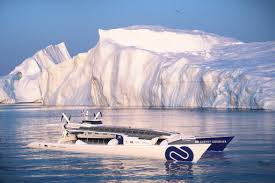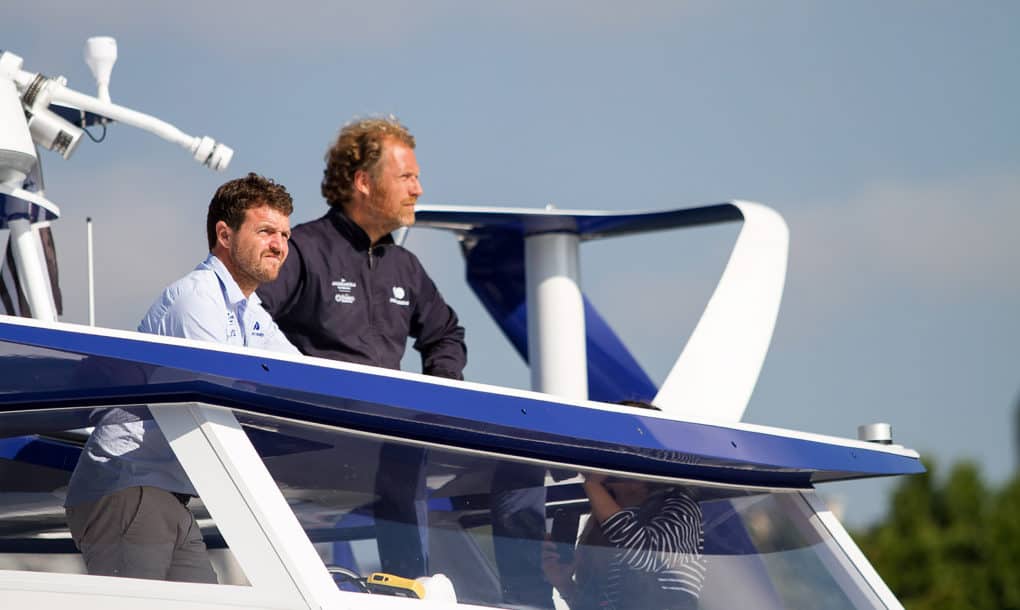
Breaking News
 Former White House Advisor: "Trump to Release $150 Trillion Endowment"
Former White House Advisor: "Trump to Release $150 Trillion Endowment"
 The Mayo Clinic just tried to pull a fast one on the Trump administration...
The Mayo Clinic just tried to pull a fast one on the Trump administration...
 'Cyborg 1.0': World's First Robocop Debuts With Facial Recognition And 360° Camera Visio
'Cyborg 1.0': World's First Robocop Debuts With Facial Recognition And 360° Camera Visio
 Dr. Aseem Malhotra Joins Alex Jones Live In-Studio! Top Medical Advisor To HHS Sec. RFK Jr. Gives...
Dr. Aseem Malhotra Joins Alex Jones Live In-Studio! Top Medical Advisor To HHS Sec. RFK Jr. Gives...
Top Tech News
 Scientists reach pivotal breakthrough in quest for limitless energy:
Scientists reach pivotal breakthrough in quest for limitless energy:
 Kawasaki CORLEO Walks Like a Robot, Rides Like a Bike!
Kawasaki CORLEO Walks Like a Robot, Rides Like a Bike!
 World's Smallest Pacemaker is Made for Newborns, Activated by Light, and Requires No Surgery
World's Smallest Pacemaker is Made for Newborns, Activated by Light, and Requires No Surgery
 Barrel-rotor flying car prototype begins flight testing
Barrel-rotor flying car prototype begins flight testing
 Coin-sized nuclear 3V battery with 50-year lifespan enters mass production
Coin-sized nuclear 3V battery with 50-year lifespan enters mass production
 BREAKTHROUGH Testing Soon for Starship's Point-to-Point Flights: The Future of Transportation
BREAKTHROUGH Testing Soon for Starship's Point-to-Point Flights: The Future of Transportation
 Molten salt test loop to advance next-gen nuclear reactors
Molten salt test loop to advance next-gen nuclear reactors
 Quantum Teleportation Achieved Over Internet For The First Time
Quantum Teleportation Achieved Over Internet For The First Time
 Watch the Jetson Personal Air Vehicle take flight, then order your own
Watch the Jetson Personal Air Vehicle take flight, then order your own
 Microneedles extract harmful cells, deliver drugs into chronic wounds
Microneedles extract harmful cells, deliver drugs into chronic wounds
World's First Self-Sufficient Hydrogen Boat Embarks On 6-Year Journey

Following the success of Solar Impulse 2, a solar-powered aircraft that traveled the world last year, the Energy Observer has just left for its 6-year journey around the world and it's being powered by the sun, wind, and hydrogen. It's been nicknamed the "Solar Impulse of the Seas" and is set to stop in 50 countries over the next 6 years to promote emissions-free travel.
Originally designed and used in 1983 for open-sea sailing races but was recently converted by 50 engineers, designers, and naval architects to repurpose the vessel. Skippers Victorien Erussard and Frederic Dahirel spearheaded the conversion and Erussard and filmmaker Jérôme Delafosse will helm the ship.
During the day, the Energy Observer will run off of the energy produced from the sun and wind via solar panels and two vertical axis wind turbines. At night, the boat will run on hydrogen using an electrolysis system onboard that takes in seawater to generate hydrogen, allowing the vessel to be completely free of emissions.
"The problem is that 95 per cent of the hydrogen that you use already is made out of fossil energies," explained Delafosse. "We will produce hydrogen onboard from the ocean, we will clean and purify the water and then we will electrolyse it and then compress it in tank storage."

Credit: Inhabitat
That's not all the ship has to offer. It's also equipped with electric motors, lithium-ion batteries, a hydrogen fuel cell, and a traction kite among other technologies aimed at making the boat eco-friendly. The 100-foot long and 42-foot wide boat was constructed with $5 million and christened by France's environment minister Nicolas Hulot prior to leaving Paris earlier this month. When the boat embarked on its journey, it carried Anne Hidalgo, Paris' mayor, aboard the vessel.
Energy Observer is three times lighter than MS Tûranor PlanetSolar, the last solar-powered boat to circumnavigate the world, and can theoretically go three times faster at a top speed of 42 knots. However, PlanetSolar took only 18 months to travel the world and Energy Observer will likely cruise at 8 to 10 knots for the next 6 years. When asked why they would be taking so long in their journey, the explorers had an appropriate explanation.
"We can use this technology in hotels, in houses, in cars… the idea is to be less dependent on the network," Delafosse said. "It shows how fast things can happen: as it did in London at the turn of the last century with [moving from] horses to cars, it will happen with renewable energy."



